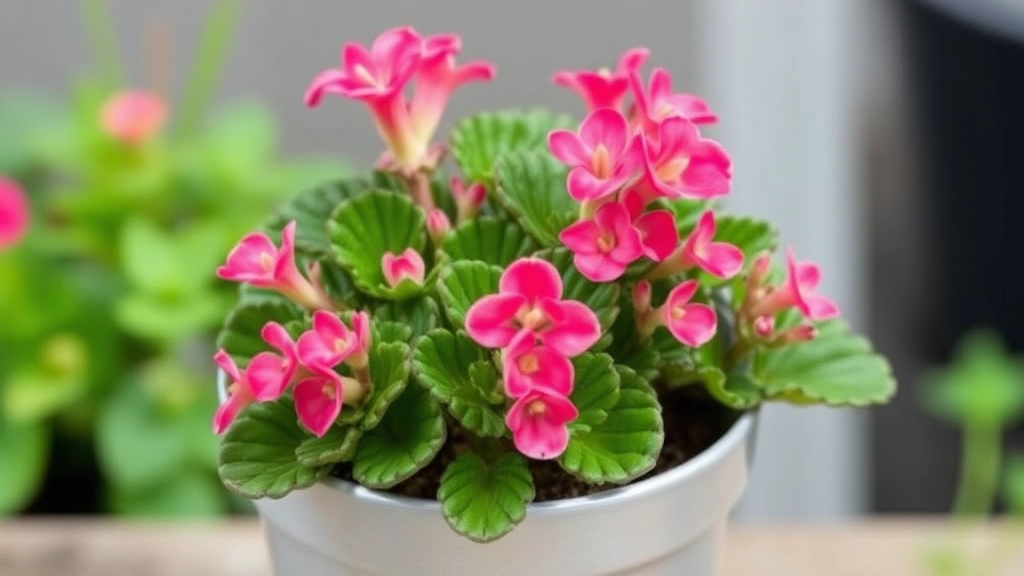Caring for Your Kalanchoe Plant in Summer
Wondering how to care for your Kalanchoe plant in summer? You’re in the right place. Summer brings its own set of challenges for this beautiful succulent, but with a few simple tips, you can keep it thriving. Let’s dive into the best light conditions, watering practices, and temperature management to ensure your Kalanchoe stays healthy and vibrant.
Light Conditions
First, make sure your Kalanchoe gets plenty of indirect sunlight. Direct sun can cause sunburn, especially during peak hours.
Watering Practices
Watering is another crucial aspect; aim for a balance, keeping the soil slightly moist but never soggy.
Temperature Management
Lastly, maintain an ideal temperature range between 18-24°C to avoid heat stress. Follow these tips, and your Kalanchoe will flourish all summer long.
Best Light Conditions for Summer Growth
As summer approaches, many of us find ourselves wondering how to provide the best light conditions for our Kalanchoe plants.
These vibrant succulents thrive in bright, indirect sunlight, making proper lighting essential for their growth.
Watering Tips for Hot Weather
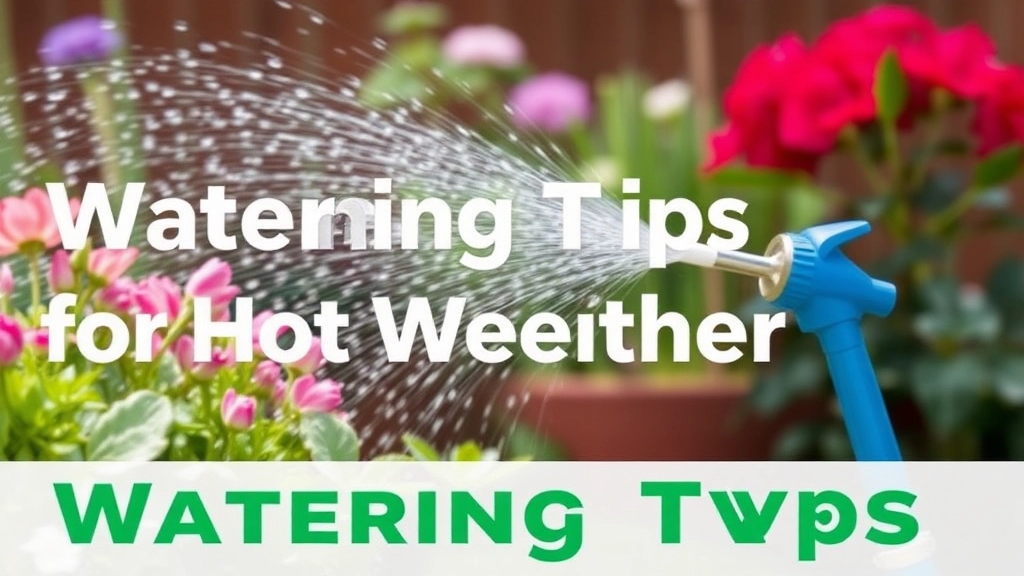
When summer rolls around, keeping your Kalanchoe happy can feel like a juggling act, especially when it comes to watering. You might be wondering, “How often should I water my Kalanchoe in this heat?”
Here’s the scoop:
- Check the Soil: Before you reach for that watering can, poke your finger about an inch into the soil. If it feels dry, it’s time for a drink. If it’s still moist, hold off a bit longer.
- Water Deeply: When you do water, give it a good soaking. This encourages deeper root growth. Aim for the soil, not the leaves, to avoid any pesky rot.
- Time It Right: Early mornings or late afternoons are the best times to water. This way, your Kalanchoe can soak it up before the sun gets too intense.
- Adjust for Containers: If your Kalanchoe is in a pot, remember that they tend to dry out faster. You might need to water more frequently than if it were planted in the ground.
- Watch for Wilting: If your plant starts to droop, it’s a sign it’s thirsty. But be careful! Overwatering can lead to root rot, which is a real buzzkill for your plant.
- Humidity Matters: If you’re in a particularly humid area, your Kalanchoe may need less water. Keep an eye on the weather!
So, as you can see, watering isn’t just about pouring water whenever it looks dry. It’s about understanding your plant’s needs in the heat.
Ideal Temperature Range for Kalanchoe in Summer
As we dive deeper into caring for your Kalanchoe during the summer, understanding its ideal temperature range is crucial.
What Temperature Does Kalanchoe Thrive In?
Kalanchoe plants flourish best in warm environments. The ideal temperature range for summer growth is between 20°C to 30°C (68°F to 86°F).
Why Temperature Matters:
- Optimal Growth: Staying within this range promotes healthy growth and vibrant blooms.
- Stress Reduction: Extreme temperatures, whether too hot or too cold, can stress the plant, leading to wilting or stunted growth.
Signs of Temperature Stress:
- Wilting Leaves: If your Kalanchoe’s leaves start to droop, it may be too hot. For more detailed solutions, check out our guide on fixing drooping Kalanchoe leaves.
- Leaf Drop: A sudden loss of leaves can indicate that the plant is struggling with temperature extremes. Learn more about the causes and solutions for leaf drop.
Tips for Managing Temperature:
- Location Matters: Place your Kalanchoe in a spot where it can benefit from natural light but is shielded from the harsh afternoon sun.
- Air Circulation: Ensure good airflow around your plant to help maintain a consistent temperature.
How to Avoid Sunburn and Heat Stress

As we transition into the summer months, it’s crucial to consider how to protect your Kalanchoe from potential sunburn and heat stress.
Common Concerns:
- Are my plants getting too much sun?
- How can I tell if my Kalanchoe is stressed?
- What preventive measures can I take?
Signs of Sunburn and Heat Stress:
- Yellowing or browning leaves
- Wilting or drooping
- Leaf drop
Preventive Measures:
- Choose the Right Location:
- Place your Kalanchoe in a spot with partial shade during the hottest parts of the day.
- Morning sun is ideal; afternoon sun can be too intense.
- Use Shade Cloth:
- Consider using a shade cloth to filter harsh sunlight.
- This can reduce the intensity of direct sunlight while still allowing light to reach your plant.
- Gradual Acclimatization:
- If moving your Kalanchoe outdoors, do it gradually.
- Start with a few hours of sunlight per day, increasing exposure over a week.
- Monitor Soil Moisture:
- Ensure the soil remains slightly moist but not soggy.
- Dry soil can exacerbate heat stress.
- Misting:
- Lightly misting your Kalanchoe can help increase humidity.
- This is especially useful during extreme heat.
- Mulching:
- Adding a layer of mulch can help regulate soil temperature.
- It also retains moisture, providing a cooler root environment.
As we transition from discussing how to avoid sunburn and heat stress in your Kalanchoe, it’s essential to consider how proper fertilisation can enhance its summer blooms.
Are your Kalanchoe plants not blooming as vibrantly as you’d like during the summer months?
Fertilisation plays a crucial role in encouraging lush growth and abundant flowers.
Here are some key tips for using fertilizer effectively:
– **Choose the Right Fertiliser:** Opt for a balanced, water-soluble fertiliser with an NPK ratio of 15-30-15. This ratio provides the necessary nutrients for flower development.
– **Frequency of Application:** Apply fertiliser every 4-6 weeks during the growing season. This timing helps maintain nutrient levels without overwhelming the plant.
– **Dilution is Key:** Always dilute the fertiliser to half the recommended strength. Kalanchoe can be sensitive, and too much fertiliser can lead to root burn.
– **Watering After Fertilising:** After applying fertiliser, water your Kalanchoe thoroughly. This helps distribute the nutrients evenly and prevents any potential damage to the roots.
– **Organic Options:** Consider using organic fertilisers like fish emulsion or seaweed extract. These can provide a gentle nutrient boost and improve soil health.
If you’re still having trouble getting your Kalanchoe to bloom, you might want to explore the [top reasons and fixes for non-flowering Kalanchoe](https://planthq.org/why-is-my-kalanchoe-not-flowering-top-reasons-and-fixes/). Additionally, for those looking to propagate their plants, check out this guide on [how to propagate Kalanchoe Mother of Thousands easily](https://planthq.org/how-to-propagate-kalanchoe-mother-of-thousands-easily/).
Pruning and Deadheading for a Fuller Plant
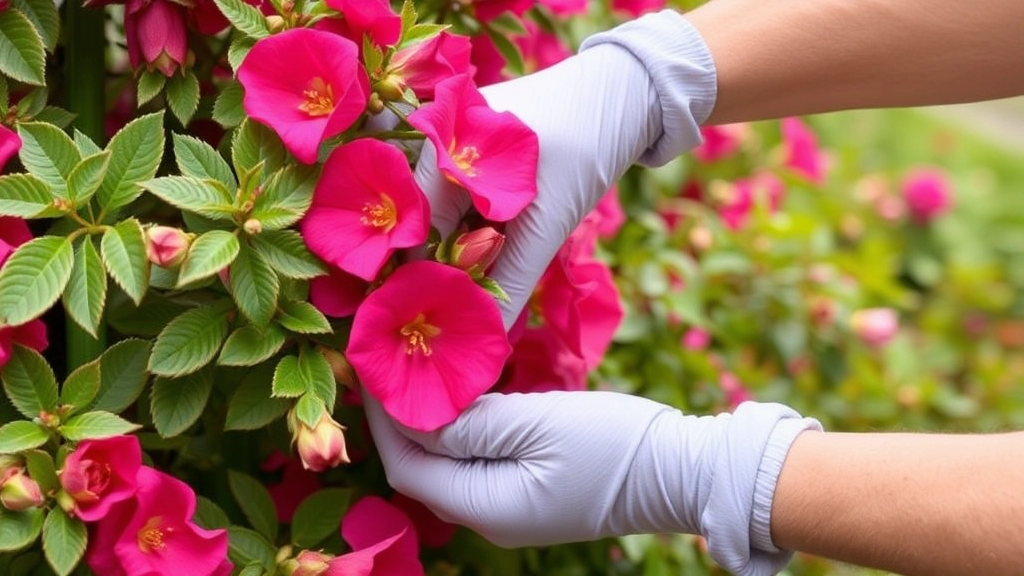
So, you’ve been nurturing your Kalanchoe all summer, and now you’re wondering how to keep it looking lush and vibrant.
Pruning and deadheading are essential for maintaining a fuller plant and encouraging new growth. But what does that mean for you and your Kalanchoe?
Here are some straightforward tips to get you started:
- Deadheading: This is simply removing spent flowers. It helps redirect the plant’s energy into producing new blooms instead of wasting it on fading ones. Just pinch or cut off the dead flowers at the base.
- Pruning: If your Kalanchoe is getting a bit leggy or overgrown, don’t be shy! Snip back any long stems or leaves that look tired. This encourages bushier growth. Aim for a clean cut just above a leaf node.
- Frequency: Check your plant every few weeks. Regular deadheading and occasional pruning can make a world of difference.
- Tools: Use clean, sharp scissors or pruning shears to avoid damaging the plant.
- Timing: The best time to prune is after blooming. This allows the plant to focus on healthy growth during the summer months.
By keeping up with pruning and deadheading, you’ll not only keep your Kalanchoe looking its best, but you’ll also promote a more vigorous bloom cycle.
Proper Drainage and Soil Management
One of the most significant concerns for Kalanchoe care during the summer months is ensuring proper drainage and soil management.
Are you worried about overwatering your Kalanchoe and causing root rot?
Here’s how to create the perfect environment for your plant to thrive:
- Choose the Right Soil:
- Use a well-draining potting mix, ideally a cactus or succulent blend.
- Consider adding perlite or sand to enhance drainage.
- Pot Selection:
- Opt for pots with drainage holes to allow excess water to escape.
- Terracotta pots are excellent as they absorb moisture, preventing overwatering.
- Watering Practices:
- Water only when the top inch of soil feels dry.
- Ensure water flows freely out of the drainage holes.
- Monitor Soil Moisture:
- Use a moisture meter for accuracy.
- Adjust your watering schedule based on temperature and humidity levels.
- Avoid Compaction:
- Regularly check for soil compaction and refresh the top layer if needed.
- This helps maintain aeration and drainage.
By managing soil and drainage effectively, you can prevent common issues and promote healthy growth. For more detailed guidance, check out our Kalanchoe Beharensis care tips and our comprehensive Kalanchoe Paddle Plant care guide.
Managing Pests and Diseases in Summer
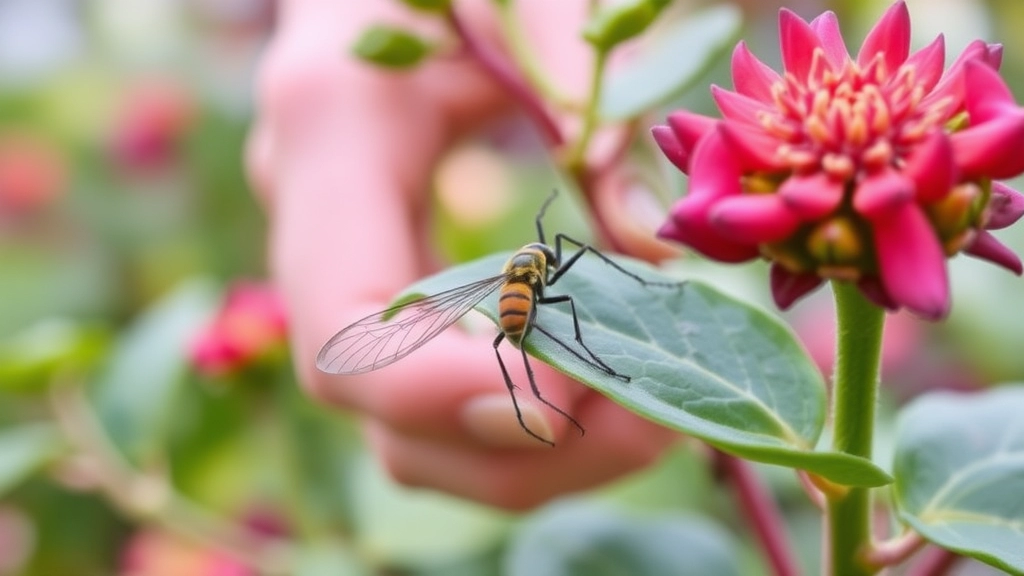
As we dive into summer, the vibrant growth of your Kalanchoe can attract some unwanted guests.
What pests should you watch for?
- Aphids: These tiny critters suck the sap from your plant, leaving it weak.
- Mealybugs: Soft, white, and cotton-like, they love to hide in leaf joints.
- Spider mites: These guys thrive in hot, dry conditions, leaving a telltale webbing.
Signs of trouble:
- Yellowing leaves?
- Sticky residue (honeydew) on leaves?
- Webs or small dots on the underside of leaves?
Don’t panic! Here’s how to keep your Kalanchoe healthy and pest-free:
- Inspect Regularly: Check your plants weekly. Catching problems early makes a world of difference.
- Natural Predators: Ladybugs and lacewings are your friends. They’ll munch on aphids and mealybugs.
- Neem Oil: A natural pesticide that’s safe for your plant. Just mix it with water and spray it on affected areas.
- Soap Solution: A mild dish soap mixed with water can help. Just spray it on the pests and rinse after a few hours.
Watch for diseases too!
- Powdery Mildew: A white, powdery fungus that shows up in humid conditions.
- Root Rot: Overwatering can lead to this, so ensure proper drainage.
Prevention Tips:
- Good Airflow: Space your plants well to keep air circulating.
- Water Wisely: Water at the base of the plant to avoid wetting the leaves.
If you do spot a disease, act fast! Remove affected leaves and improve airflow.
How to Promote Reblooming Outdoors
As we transition from the vibrant summer months, you might be wondering how to encourage your Kalanchoe to bloom again outdoors.
Understanding Reblooming
Kalanchoe plants are renowned for their stunning flowers, but getting them to rebloom can sometimes be a challenge. Here are some straightforward strategies to help you achieve that:
- Light Exposure: Ensure your Kalanchoe receives plenty of bright, indirect sunlight. Aim for at least 6 hours of light each day. Too little light can hinder blooming.
- Watering Routine: Keep a consistent watering schedule. Allow the top layer of soil to dry out between waterings. Overwatering can lead to root rot, while underwatering can stress the plant.
- Temperature Control: Kalanchoe thrives in warmer temperatures. Maintain a temperature range of 20-25°C (68-77°F) during the day and slightly cooler at night. This balance encourages blooming.
- Fertilization: Use a balanced, water-soluble fertilizer every 4-6 weeks during the growing season. This will provide the necessary nutrients to support blooming.
- Deadheading: Remove spent flowers promptly. This not only keeps the plant looking tidy but also encourages it to produce new blooms.
- Pruning: After the flowering period, trim back any leggy growth. This promotes a fuller, bushier plant, which can lead to more blooms in the future.
- Stress Induction: Sometimes, a little stress can encourage blooming. Consider withholding water for a short period to stimulate the plant.
By following these tips, you can create an environment that encourages your Kalanchoe to showcase its beautiful flowers once again. For more detailed care instructions, check out our Ultimate Guide to Flowering Kalanchoe Care and learn about the best practices for Kalanchoe flower buds.
Tips for Moving Kalanchoe Indoors During Extreme Heat
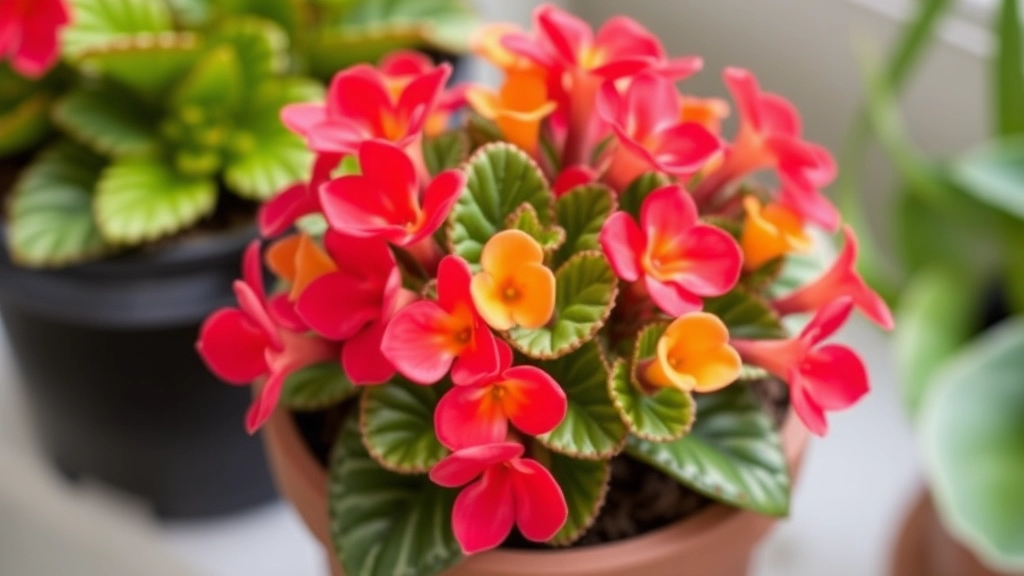
So, you’ve been nurturing your Kalanchoe all summer, but the heat is becoming unbearable.
What do you do when the sun feels like it’s turning your beloved plant into a crispy critter?
Moving your Kalanchoe indoors can be a lifesaver when temperatures soar. Here’s how to do it right:
1. Choose the Right Time
- Early Morning or Late Evening: Pick a time when temperatures are cooler to avoid shock.
2. Gradual Transition
- Acclimatise Your Plant: Before moving it indoors, let your Kalanchoe spend a few hours in a shaded area. This helps it adjust to the change.
3. Check Indoor Conditions
- Light Levels: Ensure your indoor space has plenty of bright, indirect light. Kalanchoe loves light, but too much direct sun can be harsh.
4. Monitor Humidity
- Keep it Comfortable: Indoor air can be drier. Consider using a humidifier or placing a tray of water nearby to maintain humidity.
5. Watering Adjustments
- Less Frequent Watering: Indoor conditions often require less water. Check the soil moisture before watering to avoid overdoing it.
6. Watch for Pests
- Inspect Regularly: Moving indoors can invite unwanted guests. Keep an eye out for pests and treat them promptly.
7. Maintain a Stable Temperature
- Avoid Drafts: Keep your Kalanchoe away from air conditioning vents or drafty windows to prevent temperature shocks.
Preparing for Fall After Summer Growth
As summer draws to a close, many Kalanchoe owners wonder how to transition their plants for the cooler months ahead.
Assessing Summer Growth
After a season of vibrant blooms and rapid growth, it’s essential to evaluate the health of your Kalanchoe. Here are some key points to consider:
- Check for Signs of Stress: Look for yellowing leaves or wilting, which may indicate overwatering or heat stress.
- Evaluate Growth: Has your plant become leggy? If so, it may need some pruning.
Pruning and Maintenance
To ensure a healthy transition into fall, pruning is crucial. Here’s how to do it effectively:
- Remove Dead Flowers: Deadheading encourages new growth and keeps your plant looking tidy.
- Trim Excess Growth: Cut back any leggy stems to promote a fuller appearance. For more detailed advice, check out our essential tips for optimal growth.
Adjusting Light and Temperature
As the days shorten, adjusting your Kalanchoe’s environment is vital:
- Reduce Direct Sunlight: Gradually shift your plant to a location with indirect light to prevent shock.
- Monitor Temperature: Aim to keep your Kalanchoe in a warm environment, ideally between 15°C and 24°C. For comprehensive seasonal advice, read our winter care tips.
Watering Practices
With cooler temperatures, your watering routine will need to adapt:
- Decrease Frequency: Kalanchoe requires less water as the weather cools. Check the soil moisture before watering.
- Use Well-Draining Soil: This helps prevent root rot during the wetter fall months.
Preparing for Dormancy
As fall progresses, your Kalanchoe may enter a period of dormancy:
- Limit Fertilizer: Cut back on feeding to allow your plant to rest.
- Maintain Consistent Conditions: Keep your plant in a stable environment to avoid stress.
FAQs on How to Care for Kalanchoe Plants in Summer
How often should I water my Kalanchoe during summer?
Watering frequency depends on the soil moisture. Check the soil by poking your finger about an inch deep. If it’s dry, it’s time to water. Ensure to water deeply and aim for the soil, not the leaves.
What are the signs of sunburn and heat stress in Kalanchoe?
Look for yellowing or browning leaves, wilting, drooping, and leaf drop. These are common indicators that your plant is experiencing sunburn or heat stress.
How can I protect my Kalanchoe from extreme sun and heat?
Place your plant in a spot with partial shade during the hottest parts of the day. Consider using a shade cloth and gradually acclimatize the plant to outdoor conditions. Monitor soil moisture and use mulch to regulate soil temperature.
When is the best time to prune my Kalanchoe?
The best time to prune is after blooming. This allows the plant to focus on healthy growth during the summer months. Regular deadheading and occasional pruning can keep your plant looking lush and vibrant.
What pests should I watch for in summer?
Common pests include aphids, mealybugs, and spider mites. Signs of pest infestation include yellowing leaves, sticky residue, and webs on the underside of leaves.
How can I manage pests on my Kalanchoe?
Inspect your plants regularly. Use natural predators like ladybugs, apply neem oil, or use a mild soap solution to treat affected areas. Ensure good airflow and water wisely to prevent diseases like powdery mildew and root rot.
Should I move my Kalanchoe indoors during extreme heat?
Yes, moving your Kalanchoe indoors can be beneficial during extreme heat. Choose a cooler time of day for the transition, ensure bright indirect light indoors, maintain humidity, and adjust watering frequency accordingly.
What are the key steps for moving Kalanchoe indoors?
Gradually acclimatize your plant by letting it spend a few hours in a shaded area before moving it indoors. Ensure your indoor space has adequate light, monitor humidity, and inspect for pests regularly. Keep the plant away from drafts to maintain a stable temperature.
